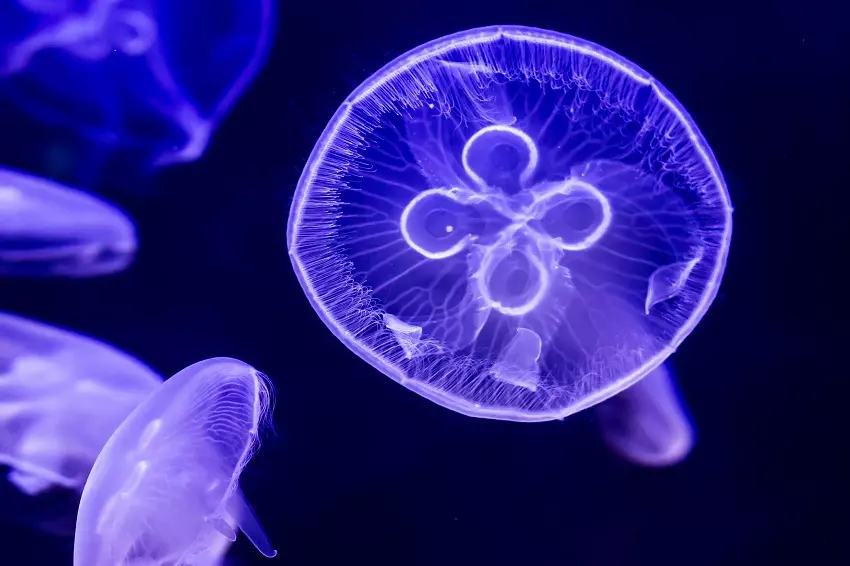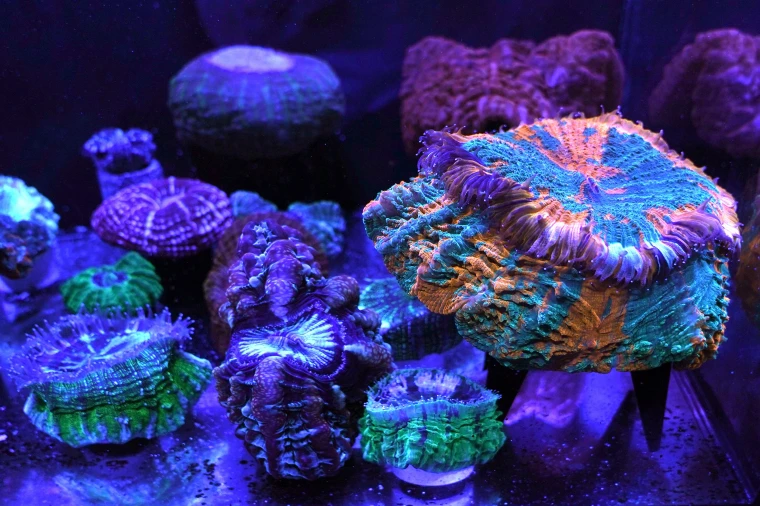What Are Moon Jellyfish Like :
About Them :
The moon jellyfish, often known as moon jelly, is present in all oceans. It is identifiable by the four circles that can be seen through the translucent white bell and around the plate’s size. The four circles represent the gonads, which are often purple and are the reproductive organs found at the base of the stomach. Moon jellyfish have frequently been discovered washed up on the shore and are widespread in UK seas. Jellyfish are composed of 95% water and lack a heart, brain, or blood.
Moon jellyfish have bell-shaped bodies with short, delicate tentacles that hang down. They use a covering of mucus over their bells to catch their plankton prey, and then they use special tentacles to transfer the minuscule food into their mouths.
Physical Description :
Size: Their usual diameter ranges from 25 to 40 cm (10 to 16 inches).
Body: The body is translucent, and nearly every internal component can be seen from the top. These critters can be identified by their four distinctive, faintly purple-hued, horseshoe-shaped gonads. Younger people frequently have patterns of streaks and dots.
Sexual Dimorphism: the similarity of the sexes is present.
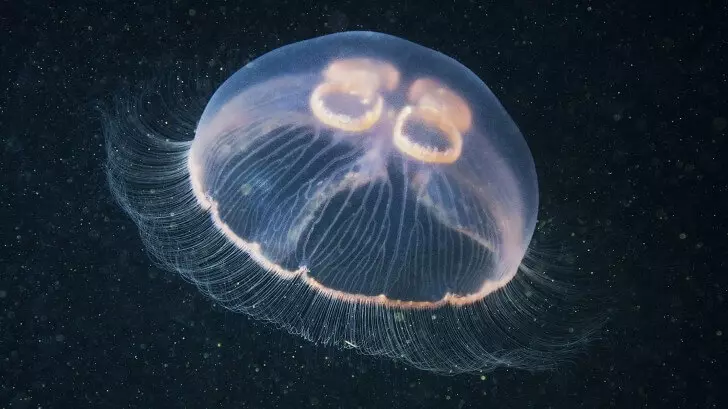
Scientific Classification
| Animalia | |
| Cnidaria | |
| Scyphozoa | |
| Semaeostomeae | |
| Ulmaridae | |
| Aurelia | |
| A. aurita | |
| Aurelia aurita |
How To Identify Moon Jellyfish :
Translucent jelly with a round, dome-like shape and four purple, circular patterns around the center. These moon jellyfish are typically visible floating just below the water’s surface.
Distribution And Subspecies of Moon Jellyfish :
They are found in seas all around our coasts. Moon jellyfish can be seen in all the seas around India, from Goa and Lakshadweep to the Gulf of Mannar and the Andaman and Nicobar Islands. They are mostly found in the warm and tropical waters around the world near the coasts of the Atlantic, Pacific, and Indian Oceans. However, they are more common in Monterey Bay along the coast of California, and in the open waters close to the East Coast, Japan, the Gulf of Mexico, and Europe.
Although there are numerous subspecies of the critters, it is almost hard to tell them apart without analyzing DNA samples from each one.

Behavior :
The bell-shaped upper section of the moon jellyfish, which is constantly kept close to the water’s surface, pulses as it swims horizontally, like most other jellyfish species do. They can maintain a wider spread of tentacles thanks to this behaviour, which also makes it easier for them to easily capture prey. In pursuit of food, they occasionally travel in small groups.
The term “smack” refers to a group of jellyfish, and the term “bloom” refers to a bigger group of smacks. A single bloom could have over a thousand individuals. However, a number of variables, including as the oxygen concentration of the water, ocean currents, nutrients, and temperature, affect the production of bloom. These creatures sting their prey and inject nematocysts from their tentacles into the victim.
Life Cycle And Lifespan :
The female releases the fertilized eggs, which eventually develop into larval forms known as “planula,” after fertilization. These newly formed organisms float on the water’s surface until they find something hard to cling to, at which point they transform into polyps.
The polyp splits when the conditions are right, and the little jellyfish swim off separately. They are referred to as the “ephyra” at this point. The newborn jellyfish transition into adult jellyfish at this time.
The moon jellyfish has an approximate one-year lifespan (both in the wild and in aquariums).
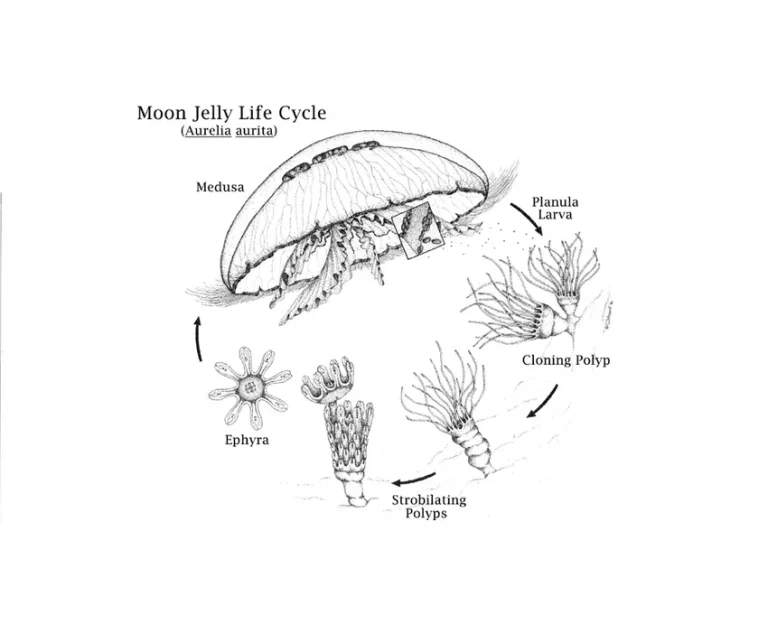
Reproduction and Mating :
The moon jellyfish’s breeding season is in the spring and summer. They are oviparous, and because of their vivid colors, the female jellyfish’s gonads are the most easily recognized feature of these organisms. These organs are situated near the base of their stomachs, inside the pouches made by the frills of the oral arms. After the female consumes strands of floating sperm released by the male jellyfish, the eggs are fertilized.
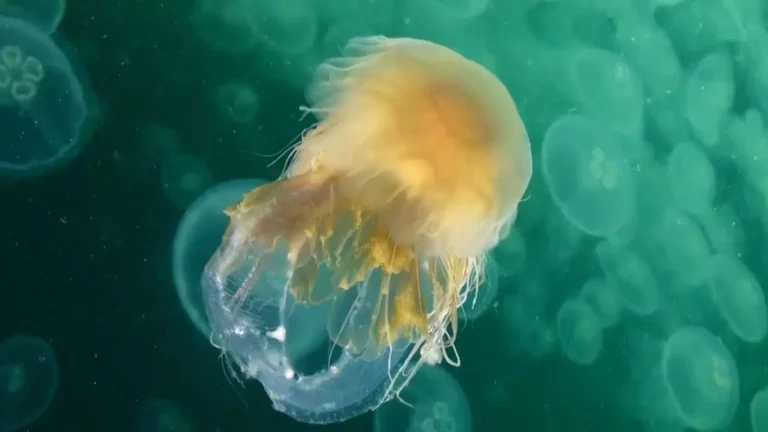
Predators Of Moon Jellyfish :
The other larger jellyfish are their main adversaries, as well as large open-water animals such as the ocean sunfish, spadefish, tuna, swordfish, and leatherback turtle.
Do Moon Jellyfish Sting (Poisonous/Dangerous) :
This vertebrate’s tentacles are somewhat venomous, but only to small marine invertebrates. They are essentially safe for people. Because human skin is impermeable to its venom (toxin), people are unaffected by their lethal bites.
They are listed by the IUCN in the conservation category “Not Evaluated.”
Diet Of Moon Jellyfish :
The moon jellyfish is a carnivore that feeds mostly on planktons, which can include crustaceans, tunicates, mollusks, immature polychaetes, protozoans, fish eggs, larvae, rotifers, diatoms, and other small jellies.

Moon Jellyfish Interesting Facts :
- Their bodies are devoid of the digestive, circulatory, respiratory, and even the blood, brain, hearing, eyes, and heart systems.
- They only have one multifunctional orifice, which serves as both the mouth, or anus, and an entrance for sperm in females. It is located between the oral arms.
- These animals’ bodies are composed of 95% water, 3% protein, and 1% mineral.
- Similar to the notorious Portuguese man-of-war jellyfish, they are related.
- The edible jellyfish is prized as a delicacy, particularly in some Asian nations.
- The white, translucent spherical bell that roughly resembles the full moon from the top gave the jellyfish its name.
- Moon jellyfish have two main stages to their lifecycle: polyp and medusa. The latter is the adult, bell-shaped, floating jellyfish we are familiar with. The former is a small stalk that attaches to a rock and divides into buds that break free to become adults.

